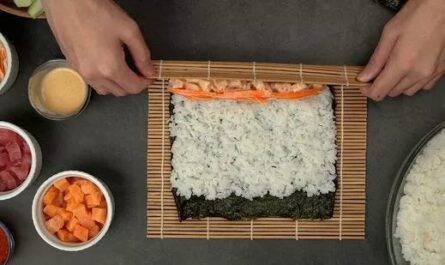How to Cook Rice in an Electric Pressure Cooker
Cooking rice can be both a culinary art and a daunting task for many, especially when striving for that perfect texture. Using an electric pressure cooker can demystify this process, drawing in flavors and bringing out the best in every grain. Learning how to cook rice in an electric pressure cooker can indeed transform your kitchen game, providing a consistent outcome every time.

Understanding the Magic of Electric Pressure Cookers
Delving into the world of electric pressure cookers unveils a cooking method that combines the benefits of speed and flavor retention. By creating a sealed environment, these cookers trap steam, intensifying the flavors and rapidly cooking food. This method is especially beneficial for rice, ensuring an even cook that is hard to achieve on the stovetop. For those looking to explore further into the realm of pressure cooking, our garbanzo beans guide is a must-read.
Key Ingredients for Perfect Rice
- Rice: 1 cup of your choice (Basmati, Jasmine, Brown)
- Water: 1 to 1.5 cups, depending on rice type
- Salt: To taste
- Olive Oil or Butter: 1 tablespoon (optional for added flavor)
Step-by-Step Cooking Instructions
The transformation from raw rice to fluffy grains begins with understanding proportions and timing, which is simplified by the precise nature of electric pressure cookers. Follow these steps for rice that is bound to impress:
1. Rinse the Rice
Start by rinsing your chosen rice variety under cold running water. This step is crucial as it removes excess starch, ensuring non-sticky, fluffy results. For each cup of rice, use an equal or slightly greater water ratio, adjusting based on the type of rice and personal preference.
2. Set Up the Pressure Cooker
Place the washed rice into the electric pressure cooker, adding the appropriate amount of water, a pinch of salt, and optionally, a tablespoon of olive oil or butter. This addition can enhance the flavor and texture of your rice. Secure the lid, set the pressure cooking time to roughly 3 to 10 minutes (depending on rice variety; Basmati typically requires less time, while Brown rice may need more), and let the magic happen. For those curious about expanding their pressure cooker repertoire, check out our hominy tutorial.
3. Natural Release
Once the cooking cycle completes, allow the cooker to release pressure naturally, typically taking about 10 minutes. This gradual process is essential for completing the cooking process without breaking the grains. In moments of culinary exploration, devices like electric pressure cookers become invaluable as demonstrated in this guide on mastering pressure cookers.
Perfecting the Rice Texture and Flavor
Once the pressure has fully released, open and fluff the rice with a fork. This step helps separate the grains, releasing any remaining steam and allowing each grain to stand on its own. From here, the rice is ready to be paired with a myriad of dishes or enjoyed on its own, celebrated for its simplicity and flavor.
Pro Tips for Rice Success
To elevate your rice cooking skills, a few pro tips can make all the difference. Precision in water-to-rice ratios is crucial and can be adjusted based on personal texture preferences. Monitoring the release of pressure and fluffing promptly are key steps for optimal results. Likewise, utilizing flavorful broths instead of water can infuse additional flavors into the rice. For more pressure cooking tips, including vegetables, visit our green beans preparation.

Common Issues and Fixes in Rice Cooking
While electric pressure cookers are usually foolproof, sometimes issues like mushy or undercooked rice might arise. Troubleshooting here involves reassessing water ratios, ensuring all components are functioning correctly, and possibly extending release times. With practice, common pitfalls can be navigated with ease, lending to consistent, delicious results every time.
Conclusion
Mastering how to cook rice in an electric pressure cooker not only enriches your culinary skills but opens up an efficient way to create meals. With its ability to maintain flavors and textures, your rice dishes will never be the same. Dive deeper into the joys of pressure cooking and all it has to offer by exploring other delectable recipes that highlight this device’s versatility.
This article contains affiliate links. We may earn a commission at no extra cost to you.



